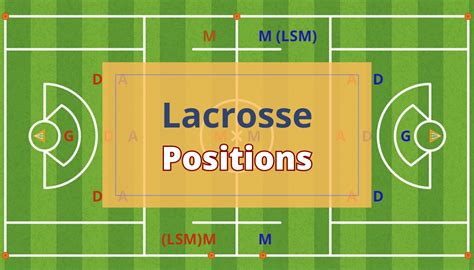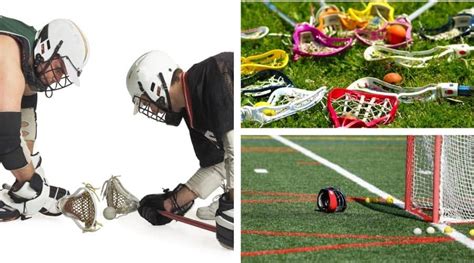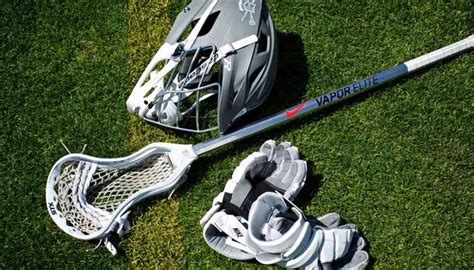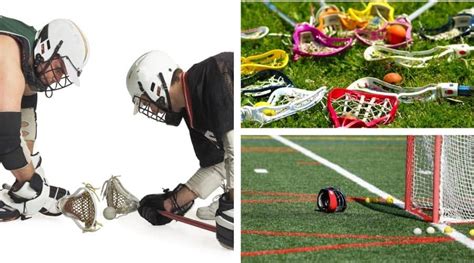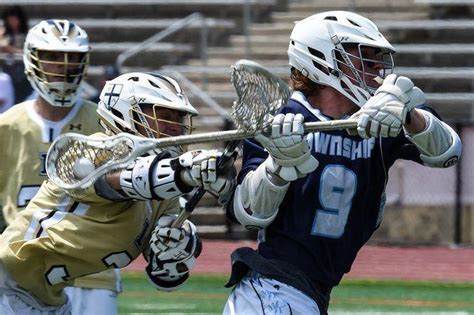Explore the significance of lacrosse positions, discover how to find your ideal role, and learn key responsibilities and skills for team success.Lacrosse is not just a game of speed and skill; it’s a dynamic interplay of positions that each bring unique strengths to the field. Understanding the roles and responsibilities associated with various lacrosse positions is crucial for players looking to enhance their performance and maximize their contribution to the team. In this comprehensive guide, we will delve into the different positions in lacrosse, providing an overview of their significance, how to identify the ideal role for yourself, and the key skills required for success. Whether you’re a seasoned player or a newcomer to the sport, finding your place on the field is essential for both personal growth and team strategy. Join us as we explore each lacrosse position to help you unlock your potential and elevate your game.
Overview Of Lacrosse Positions And Their Importance
Understanding Lacrosse positions is crucial for players and coaches alike. Each position on the field has its own specific roles and responsibilities, contributing to the overall success of the team. By recognizing the unique aspects of each position, players can better identify where they can maximize their strengths and contribute to team dynamics.
The primary positions in lacrosse can be categorized generally into three main groups: attackmen, midfielders, and defensemen, along with the goalkeeper. Each group plays a vital role in both offensive and defensive strategies, and their performance can heavily influence the outcome of a game.
Attackmen are typically the primary scorers on a team. Their focus is on creating scoring opportunities, maneuvering through defenses, and finding the back of the net. A strong attackman needs excellent stick skills, agility, and the ability to think quickly under pressure.
Midfielders serve as the connectors on the field, often transitioning between defense and offense. They need to possess a diverse skill set, including strong endurance, passing accuracy, and the ability to support both offensive plays and defensive stands.
Defensemen are responsible for preventing the opposing team from scoring. They use a combination of physicality and tactical awareness to disrupt offensive plays, applying pressure and positioning themselves effectively to block shots and intercept passes. Understanding how to anticipate opponents’ moves is key to success in this role.
The goalkeeper is a unique position that requires a specific skill set, including quick reflexes, agility, and strategic thinking. The goalkeeper not only stops shots but is also crucial in organizing the defense and initiating offensive plays from the back.
Comprehending Lacrosse positions and their importance helps players find their fit within the team and enhances overall performance. By mastering their respective roles, players can create a more cohesive unit on the field, leading to greater success during matches.
How To Identify Your Ideal Lacrosse Position
Choosing the right lacrosse position can significantly impact your performance and enjoyment of the game. To find the position that best suits you, consider the following factors:
- Skill Set: Assess your strengths and weaknesses. For instance, if you have great speed and agility, you might excel as an attacker. If you’re good at reading plays and have strong communication skills, consider defense.
- Physical Attributes: Your height, weight, and overall athleticism can influence your position. Taller players might do well as defensemen to cover more ground, while shorter, quicker players may thrive as attackers.
- Playing Style: Reflect on how you like to play. Do you prefer being more active on the offensive end or do you enjoy the strategic aspect of defense? Understanding your playing style will help you determine where you can contribute the most.
- Team Needs: Evaluate your team’s requirements. If your team lacks a strong faceoff specialist, and you excel in that area, it might be an opportunity for you to take on that position.
- Feedback from Coaches and Peers: Consult with your coaches and teammates. They can provide valuable insights based on their observations of your gameplay and may suggest positions where they believe you would excel.
The best way to identify your ideal lacrosse position is through trial and error. Participate in different roles during practice and scrimmages until you find the fit that feels right for you. The most important thing is to enjoy the game while maximizing your contribution to the team’s success.
Key Responsibilities Of Each Lacrosse Position
Understanding the specific responsibilities associated with each of the Lacrosse Positions is crucial for maximizing individual contributions and enhancing overall team performance. Here’s a breakdown of the key responsibilities for each major position on the field:
Attack
Players in the attack position focus on scoring goals and creating offensive plays. Their responsibilities include:
- Positioning themselves to receive passes from teammates.
- Executing accurate shots on goal.
- Setting picks to create space for teammates.
- Maintaining offensive pressure to exploit defensive weaknesses.
Midfield
Midfielders are the dynamic players that bridge the gap between offense and defense. Their primary responsibilities involve:
- Transitioning the ball between offense and defense.
- Supporting offensive plays while also contributing to defensive duties.
- Winning face-offs and ground balls to maintain possession.
- Utilizing speed and stamina to cover the entire field.
Defense
Defensive players are tasked with preventing the opposing team from scoring. Their responsibilities include:
- Marking attackers and limiting their scoring opportunities.
- Intercepting passes and collecting ground balls.
- Communicating with teammates to coordinate defensive efforts.
- Supporting the goalie in protecting the goal area.
Goalie
The goalie is the last line of defense against opposing teams and has several critical responsibilities, such as:
- Stopping shots and making saves.
- Directing the defense and calling out plays.
- Distribution of the ball to initiate offensive plays.
- Staying alert for potential scoring opportunities from the opposing team.
Understanding the key responsibilities associated with each of the Lacrosse Positions allows players to better prepare for their roles, ultimately contributing to a more cohesive and effective team strategy on the field.
Lacrosse Positions: Skills Needed For Success
Each of the lacrosse positions on the field requires specific skills to ensure effective play and contribute to the team’s overall success. Here’s a breakdown of the essential skills needed for key positions:
Attackmen
- Stick Handling – Mastery of cradling the ball and performing fakes to evade defenders.
- Shooting Accuracy – Ability to shoot with precision from various angles and distances.
- Field Vision – Recognizing opportunities for assists and openings in the defense.
Midfielders
- Endurance – Maintaining stamina to cover the entire field, switching between offense and defense.
- Speed – Quick acceleration to transition between plays and open spaces.
- Versatility – Capability to perform both offensive and defensive duties effectively.
Defensemen
- Body Positioning – Using proper stance and angles to thwart attackers.
- Checking Skills – Employing checks to dislodge the ball while maintaining control.
- Communication – Coordinating with teammates to maintain effective coverage and strategy.
Goalies
- Reflexes – Quick reactions to shots on goal, able to anticipate and save attempts.
- Footwork – Agile movements to cover the goal frame effectively.
- Leadership – Directing the defense and making critical on-field decisions.
Understanding these skills necessary for the various lacrosse positions not only helps players find the right fit for their abilities but also enhances the team’s performance as a whole. Through focused training on these skills, players can maximize their potential and contribute meaningfully to their team’s success.
The Impact Of Lacrosse Positions On Team Strategy
The structure and organization of a lacrosse team heavily rely on the specific roles defined by the various lacrosse positions. Understanding the impact of these positions on team strategy is crucial for both players and coaches, as it directly influences gameplay and overall team performance.
Each position has distinct responsibilities that contribute to the team’s tactical approach. For instance, attackmen are primarily focused on scoring goals, utilizing their skills to create offensive plays. This necessitates a strategy centered around offensive coordination and communication. In contrast, defensemen are tasked with stopping offensive plays, which requires a defensive strategy emphasizing positioning, anticipation, and teamwork.
A team’s formation can vary significantly based on the strengths and weaknesses of the players occupying these lacrosse positions. A well-balanced team may opt for a strategic mix of offensive and defensive players, allowing for a fluid transition between defense and attack. On the other hand, if a team features strong offensive players, the strategy may lean more heavily towards offensive plays, utilizing formations that facilitate scoring opportunities.
Midfielders play a central role in bridging the gap between attack and defense. Their versatility allows them to adapt to various situations, making them essential in implementing team strategies that involve rapid transitions and counterattacks. When midfielders excel, they can significantly alter the dynamics of a game by controlling the pace and flow, which is vital for executing the game plan effectively.
Moreover, understanding the interplay between different lacrosse positions can lead to more effective practice sessions. Coaches can tailor drills that emphasize positional responsibilities, improving cohesiveness and fluidity during games. This coordination ensures that all players understand how their individual roles contribute to the team’s overall strategy.
In summary, the impact of lacrosse positions on team strategy is multifaceted. Each position brings unique attributes that can shape game tactics and influence the outcome. Therefore, having a comprehensive grasp of how each position functions within the team framework is instrumental for success on the field.
Frequently Asked Questions
What are the main positions in lacrosse?
The main positions in lacrosse include Attackman, Midfielder, Defenseman, and Goalie. Each position has specific responsibilities and skills required to excel.
What is the role of an Attackman?
An Attackman primarily focuses on scoring goals and setting up plays. They work closely with teammates to create offensive opportunities and are often responsible for dodging defenders.
How does a Midfielder contribute to the game?
Midfielders serve as the link between offense and defense. They are responsible for transitioning the ball, playing both ends of the field, and often take face-offs.
What are the defensive responsibilities of a Defenseman?
Defensemen are tasked with preventing the opposing team from scoring. They do this by marking attackers, blocking shots, and creating turnovers.
What makes a Goalie unique in lacrosse?
The Goalie’s primary role is to protect the goal from shots taken by the opposing team. They need quick reflexes and strong communication skills to organize their defense.
Can a player switch positions in lacrosse?
Yes, players can switch positions, especially in youth leagues or during practice. However, each position requires specific skills and understanding of the game’s dynamics.
How can a player determine their best position in lacrosse?
Players should consider their strengths, such as speed, agility, and stick skills. It can be helpful to try out different positions in practice, seek feedback from coaches, and reflect on where they feel most comfortable and effective.

